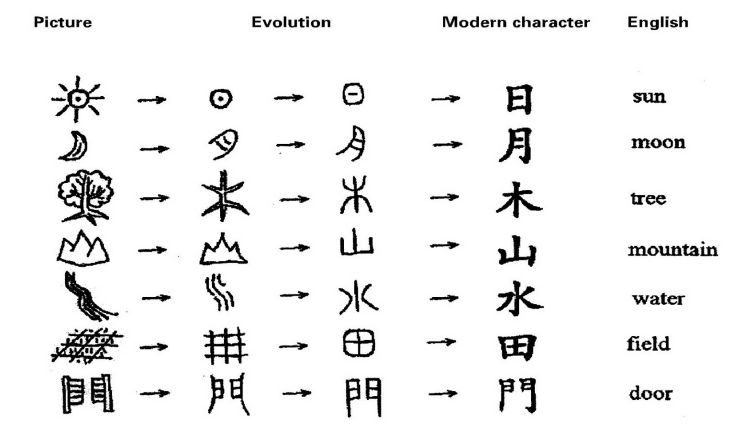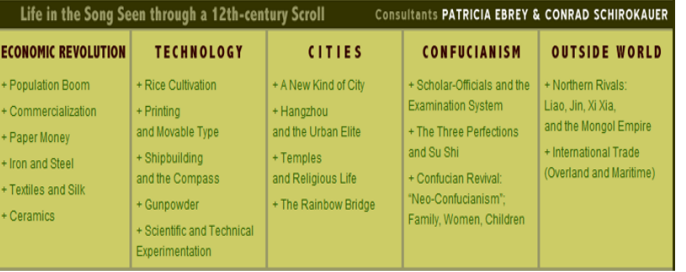History of China
1/73
There's no tags or description
Looks like no tags are added yet.
Name | Mastery | Learn | Test | Matching | Spaced |
|---|
No study sessions yet.
74 Terms
Yellow River
____ - is the place where Chinas oldest civilization started
People's Republic of China (Zhōng huá rén mín gòng hé guŏ)
What is the Official Name of China ?
YANG TZE RIVER
HUANG HE RIVER
XI JIANG RIVER
Major Rivers in China [3]
1.4 Billion people
What is the Population of China as of 2019?
1. Written Language
2. Spoken Language
Dialect of the Chinese People have 2 Elements such as : ____
Written Language
[What Element in Dialect of the Chinese People]
Represented by combination of different strokes called CHARACTER
Spoken Language
[What Element in Dialect of the Chinese People]
Represented by varies different dialects

Evolution of Chinese Characters
Xia Dynasty
Shang Dynasty
Zhou Dyanasty
Major Dynasty of China [3]
Xia Dynasty
[What Major Dynasty of China]
it is the first dynasty in Chinese history.
It lasted nearly 500 years and included the reigns of 17 emperors
500 years
17 emperors
Xia Dynasty ⬇
lasted nearly ___ years and included the reigns of_____emperors.
Xia Dynasty
[What Major Dynasty of China]
An important milestone in Chinese civilization
It marks the end of the Primitive Society and the beginning of the Class Society.
21st - 17th century BC
"What are the approximate dates of the Xia Dynasty's rule?
Shang Dynasty
[What Major Dynasty of China]
lasted almost 600 years (1700-1027 BC.)
There were a total of 30 emperors throughout 17 generations.
600 years
Shang Dynasty
lasted almost ___ [how many] years ?
30 emperors
17 generations
Shang Dynasty have a total of _____ emperors throughout ____ generations
1700-1027 B.C.
"What are the approximate dates of the Shang Dynasty rule?"
Zhou Dynasty
[What Major Dynasty of China]
Social structure became more organized and defined.
Scholars (top of the working class)
Farmers
Craftsmen
Traders (bottom of the working class)
In Zhou Dynasty
Society was divided into four main classes such as ____
king
priests
feudal shis
Ruling Class in Zhou Dynasty is composed of [3]
Scholars
Farmers
Craftsmen
Traders
Working Class in Zhou Dynasty is composed of [3]
ruling class
In Zhou Dynasty
The ______ class remained at the top, similar to the Shang Dynasty.
working class
Compared to the Shang Dynasty, the ____ class in the Zhou Dynasty was more detailed and divided by roles.
Continuity
Change
Compared to the Shang Dynasty, the working class in the Zhou Dynasty was more detailed and divided by roles.
This shift shows both change and continuity:
_____ - : The ruling class stayed the same.
______ -: The working class became more structured with specific roles.
Confucius
Lao Tzu
Mencius
Greatest Philosophers during Zhou Dynasty [3]
Lao Tzu
He is the founder of Taoism (Daoism)
Lao Tzu
____ - is a philosophy that advocates living a simple life
Qin Shihuangdi (221 B.C.E.)
Who is the First Emperor of Qin Dynasty ?
14 years
Qin Dynasty lasted for ___ years
Qin Dynasty
[What Major Dynasty of China]
Helped to establish a centralized system of rule.
Much of China was divided into provinces and districts.
Qin Dynasty
[What Major Dynasty of China]
Major infrastructure projects were built, including:
Roads
Defensive walls (early version or prelude to the Great Wall)
Qin Dynasty
[What Major Dynasty of China]
Introduced Commanderies (Prefectures, also known as Jun) for better local governance.
Tang Dynasty
[What Major Dynasty of China]
Ruled Ancient China from 618 to 907.
A time of peace and prosperity for the country.
Tang Dynasty
[What Major Dynasty of China]
China became one of the most powerful nations in the world during this period.
Tang Dynasty
[What Major Dynasty of China]
This era is often called the Golden Age of Ancient China.
Song Dynasty
[What Major Dynasty of China]

Yuan Dynasty
[What Major Dynasty of China]
First non-Han Chinese Dynasty – Ruled by Mongols, not ethnic Chinese
Yuan Dynasty
[What Major Dynasty of China]
Founded by Kublai Khan (grandson of Genghis Khan), who completed the conquest of China.
Genghis Khan
Yuan Dynasty was established due to the efforts of _____ ?
Kublai Lhan
During Yuan Dynasty
____ [who] is sent to conquer China
Marco Polo
During Yuan Dynasty
_____ –[who] Famous European explorer who visited China during this time.
1279-1368
"What are the approximate dates of the Yuan Dynasty's rule?"
Yuan Dynasty
[What Major Dynasty of China]
Trade increased between Mongolia, China, and Europe.
Ming Dyanasty
[What Major Dynasty of China]
Defeated the Mongols in 1368
Ming Dyanasty
[What Major Dynasty of China]
Reestablished Confucian-based government (traditional Chinese systems.)
Ming Dyanasty
[What Major Dynasty of China]
Attempted to eliminate all signs of foreign rule
Promoted Chinese culture over Mongol influence.
Ming Dyanasty
[What Major Dynasty of China]
Second emperor moved the capital to Beijing and constructed the Forbidden City as the imperial palace.
1368-1664
"What are the approximate dates of the Ming Dyanasty rule?"
Qing dynasty ruled
[What Major Dynasty of China]
China had many tribes in Northern provinces – The Manchu captured and unified eastern Mongolia and Korea.
1644 Manchu captured Beijing – Qing dynasty ruled China until 1912.
1912.
Qing Dynasty ruled China until ___ [what year]
false : Qing Emperor was not Chinese – But adopted Chinese culture.
[T/F] Qing Emperor was a Chinese
Hsuan-yeh
In Qing Dynasty
_____ [who]?
Also known as the Kangxi Emperor
one of Qing's greatest rulers
Qing Dynasty
[What Major Dynasty of China]
Manchu people were a minority – They had to study the Manchu language and cultural traditions.
Guomindang (GMD)
____- is the Nationalist party and was formed in 1913 and influenced heavily by the principals of Sun Yat-sen
Sun Yat-sen
Guomindang (GMD) is the Nationalist party and was formed in 1913 and influenced heavily by the principals of ______ ?
Guomindang (GMD)
____ - ruled China from a base in Nanjing from 1927-1937
Nanjing
1927-1937
Guomindang (GMD) ruled China from a base in_____ from _____
Chiang Kai Shek (Jiang Jieshi)
______-was the head of the GMD from 1928 until his death in 1975
Jiang Jieshi
Chiang Kai Shek is aka ___ ?
Chinese Communist Party (CCP)
_____ -
founded in 1921 in Shanghai
Based in the ideas of Marx and heavily influenced by agents of the Soviet Union.
Mao Zedong
Zhou Enlai
Chen Duxiu
Chinese Communist Party (CCP) was lead by _____ [who] [3]
Communist Party
In the Flag of China
Largest star represents : ____ ?
Peasant
Workers
Bourgeoisie
Capitalist
In the Flag of China
4 smaller stars represent the classes of people in China: such as _____
Confucianism
[What Religion of the Chinese People]
One word sums up the basis of all good conduct.
Golden rule: “Do not do unto others what you don’t want others to do unto you.”
Taoism
[What Religion of the Chinese People]
Chinese philosophy attributed to Lao Tzu (c. 500 BCE).
Influenced folk religion, especially in rural China.
Taoism
[What Religion of the Chinese People]
Became the official religion under the Tang Dynasty.
It is both a philosophy and a religion.
Lao Tzu
Taoism is a Chinese philosophy attributed to____ ?
Buddhism
[What Religion of the Chinese People]
Founded by Siddhartha Gautama ("the Buddha") over 2,500 years ago in India.
Later spread to China and became a major spiritual tradition.
Siddhartha Gautama ("the Buddha")
Buddhism is founded by _____ ?
Siddhartha Gautama
In Buddhism
_____ [who] is the Buddha
Hanyu Pinyin
_____ - is the China's official alphabet system for Chinese
Mandarin
____ - is the Chinese standard official language
Zhōngwén
____ - is the Chinese language
Pīnyīn
____ - is the Chinese Romantization